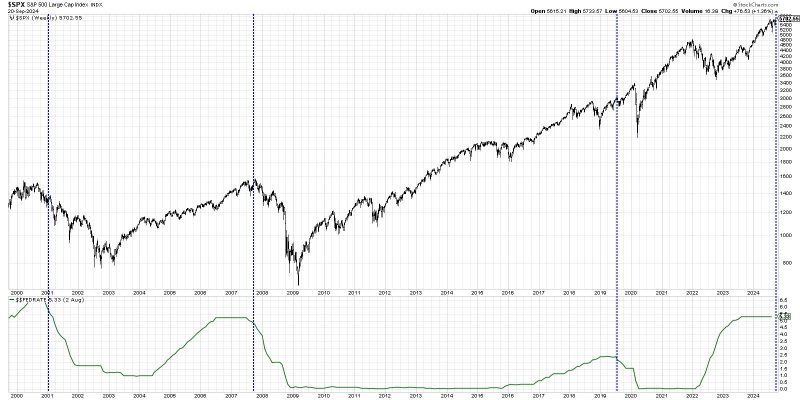In the world of finance and investing, rate cuts by central banks often spark intense debate among market participants. Some argue that rate cuts are a bullish sign for stocks, while others believe they could signal economic weakness and lead to a bearish market. The truth about rate cuts and their impact on stock performance is a complex and multifaceted issue that requires a nuanced understanding of economic dynamics and market behavior.
Historically, rate cuts by central banks have been associated with bullish sentiment in the stock market. Lower interest rates reduce the cost of borrowing for businesses and consumers, which can stimulate spending, investment, and overall economic activity. This, in turn, can lead to higher corporate profits and increased stock prices. Furthermore, lower interest rates make bonds and other fixed-income investments less attractive, prompting investors to seek higher returns in the stock market.
However, it is essential to consider the broader economic context when evaluating the impact of rate cuts on stock performance. In some cases, rate cuts may be seen as a preemptive measure by central banks to cushion the economy from potential risks, such as a slowdown in growth or geopolitical uncertainties. While rate cuts may provide a short-term boost to stocks, they could also signal underlying weakness in the economy, leading to concerns about future growth prospects.
Moreover, the effectiveness of rate cuts in boosting stock prices can vary depending on market conditions and investor sentiment. In times of economic uncertainty or market volatility, rate cuts may not have the desired impact on stock performance, as investors may focus more on risk aversion and capital preservation rather than seeking higher returns in equities. Additionally, excessive reliance on monetary policy measures such as rate cuts to support stock prices could create distortions in the market and lead to long-term risks.
It is also essential to note that stock performance is influenced by a wide range of factors beyond just interest rates. Corporate earnings, economic indicators, geopolitical developments, and investor sentiment all play a crucial role in determining stock prices. While rate cuts can have a significant impact on stock performance in the short term, investors should consider a holistic approach to analyzing market trends and making informed investment decisions.
In conclusion, the relationship between rate cuts and stock performance is not a straightforward one. While rate cuts can provide a boost to stock prices in the short term by stimulating economic activity and reducing borrowing costs, their long-term impact may be influenced by a myriad of factors. Investors should carefully assess the broader economic context, market conditions, and their investment objectives before drawing conclusions about the implications of rate cuts on stock performance. By adopting a well-informed and balanced approach, investors can navigate the complexities of rate cuts and make sound investment decisions in a dynamic market environment.
